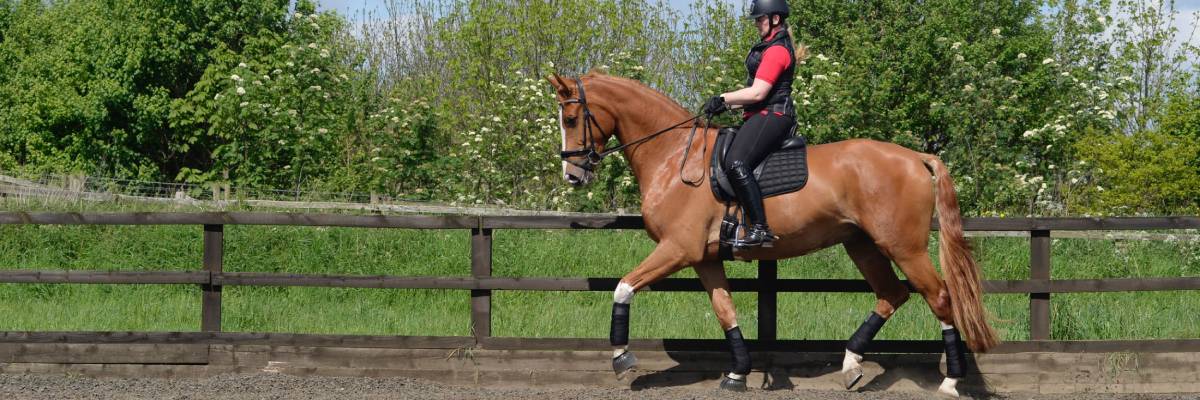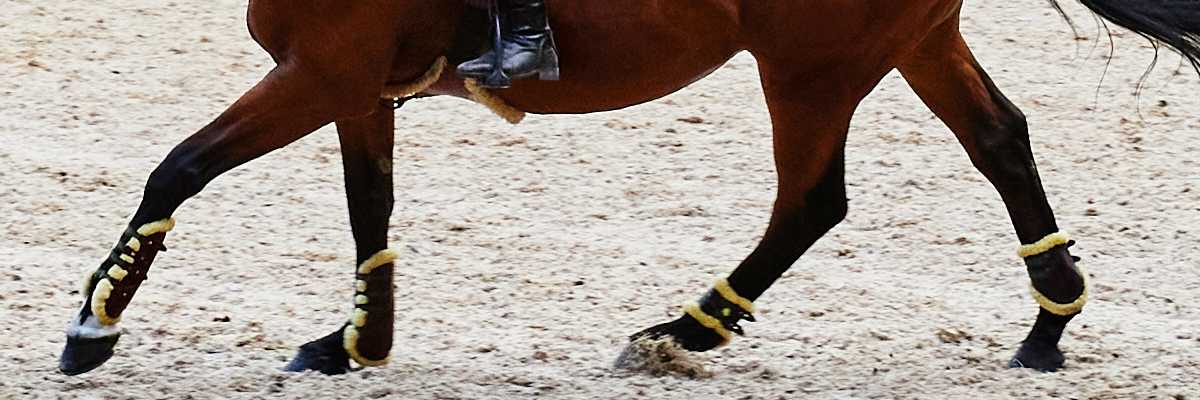
In the fifth blog of our Dressage Debunked series, international dressage rider, trainer and judge Steph Croxford discusses half-pass, a sideways movement where the horse’s legs cross over. When refined, a beautifully ridden half-pass is one of the best dressage moves to ride and to watch. We look at what half-pass is, the purpose of it and how to ride it.
What is half-pass?
Quite simply, half-pass is when a horse moves forward and sideways at the same time. Often confused with leg yielding , the main difference is that in half-pass the horse is bent in the direction of travel. Half-pass is also often referred to as a variation of travers , however it is performed on a diagonal instead of the long side of an arena.
Watch and listen to dressage rider, trainer and judge Steph Croxford explain how to ride half-pass:
Dressage levels explained
You will find half-pass at Medium level and above under British Dressage rules in the UK. In dressage tests it can be ridden in trot and canter and in passage in a freestyle test. The purpose of half-pass In trot, the half-pass should demonstrate a fluent collected trot movement on a diagonal line with a greater degree of bend than in shoulder in. The fore and hind legs cross while balance and cadence are maintained. In canter, half-pass demonstrates collection and suppleness. This is shown by moving fluently forwards and sideways without any loss of rhythm, balance or softness and submission to the bend.
Dressage Debunked
Learn more from Steph Croxford with Dressage Debunked by reading our previous post, about How to ride shoulder-in
How to ride half-pass
The horse should be slightly bent around the inside leg of the rider and in the direction in which it is moving. The horse should maintain the same cadence and balance throughout the whole movement. In order to give more freedom and mobility to the shoulders, it is of great importance that the impulsion be maintained, especially the engagement of the inside hind leg. The horse’s body is nearly parallel to the long side of the arena with the forehand slightly in advance of the hindquarters. In the trot, the outside legs pass and cross in front of the inside legs. In the canter, the movement is performed in a series of forward/sideways strides.

When it comes to riding half-pass Steph’s top piece of advice is to remember that you want your horse to look into the movement. When you first start learning the move, Steph advises riding half-pass from a shoulder-in.
"I like to ride a half-pass from a shoulder-in. This is because you've got your horse nicely wrapped around your inside leg, which is sitting just behind your horse’s inside shoulder. Imagine you’re on the left rein, start by riding a few strides of shoulder-in, in walk or trot is fine for your first attempt, and then wriggle your outside rein to say, “hey horse your right the shoulder needs to move off the track”. The split second I've asked them to move their shoulder off the outside track I would then put my outside leg back and depending on what part of their body is moving quicker I would wriggle the outside rein to then say, “move your shoulders across”. Sometimes you need a bit more leg to encourage them to shift over.
Steph's top tip:
When you and your horse are having an off day, when things just aren’t going well with your training “leave it, park it. You'll have good days and bad days, you just have to leave it and try again, tomorrow is another day."
If your horse starts to rush and you feel like you’re losing control, ride forward for a few strides in a very slight shoulder-for to the left if you're on the left rein. Or stop the movement and come back round to try it again.
Now things can go wrong within any kind of lateral movement, any movement really. So apart from when you are physically riding a dressage test and you've got a judge judging you, remember you can always have another go. At home for example, if a movement goes wrong, (which it does for me all the time!), just ride out the movement. There's no point trying to salvage it, you don't need to because you're in the warm-up or you're at home. You might as well re-present yourself, sort your knitting out, get your horse’s neck where you want it and try again.”
Where to practice half-pass
Half-pass can be ridden in an arena or in an open space such as a field. If you’re attempting half-pass in an open space, make sure you have a starting marker and a clear finish point. Having something to ride towards will help your horse focus on the movement too.
What Charlotte Dujardin says about half-pass
“Having control of your horse’s shoulders and hind-end is a crucial step towards successfully introducing flying changes so the half-pass is an important movement to nail to help you with the more advanced dressage moves. Plus remember that in half-pass you should be able to see the destination letter between your horse’s ears.”
